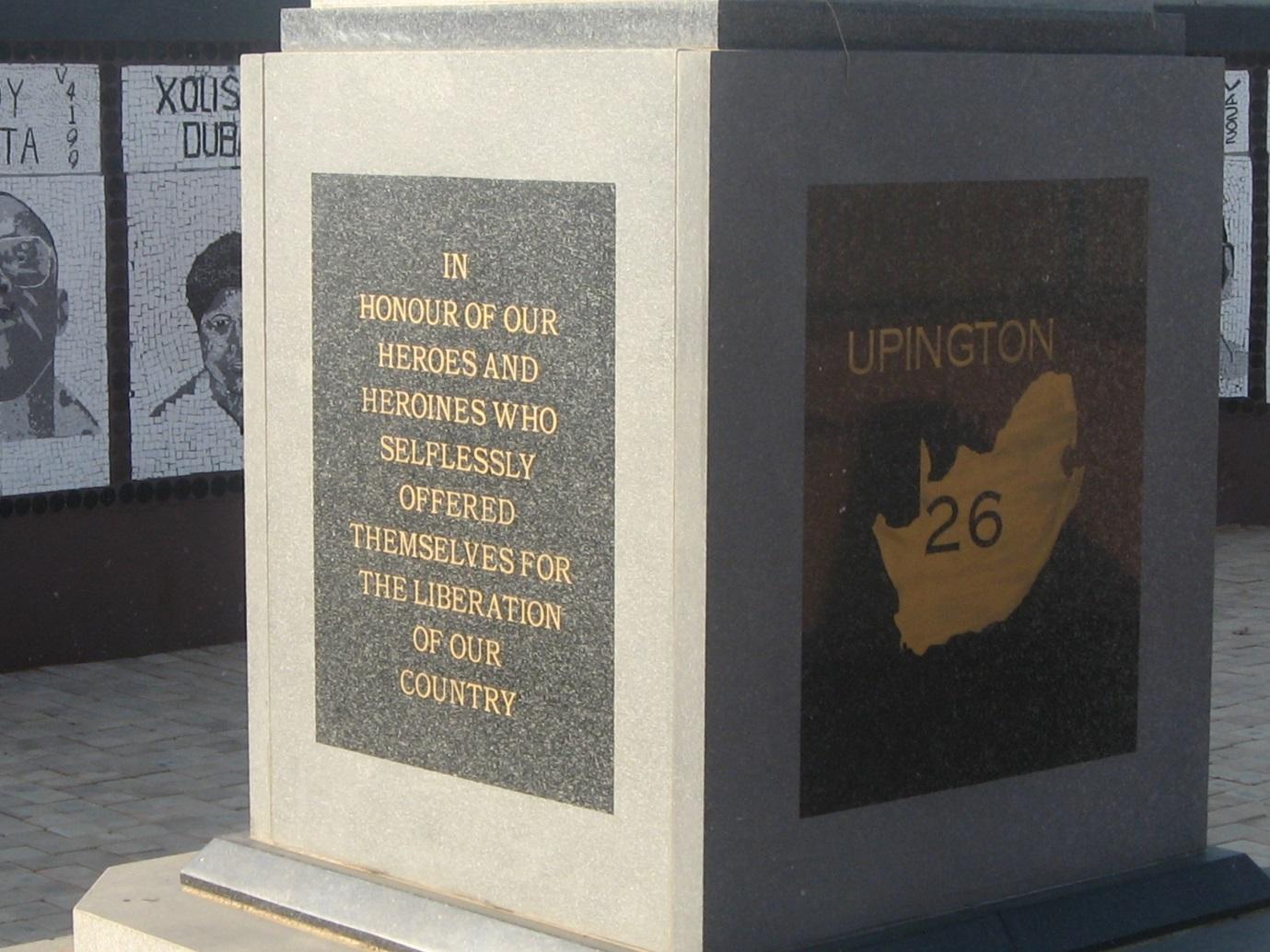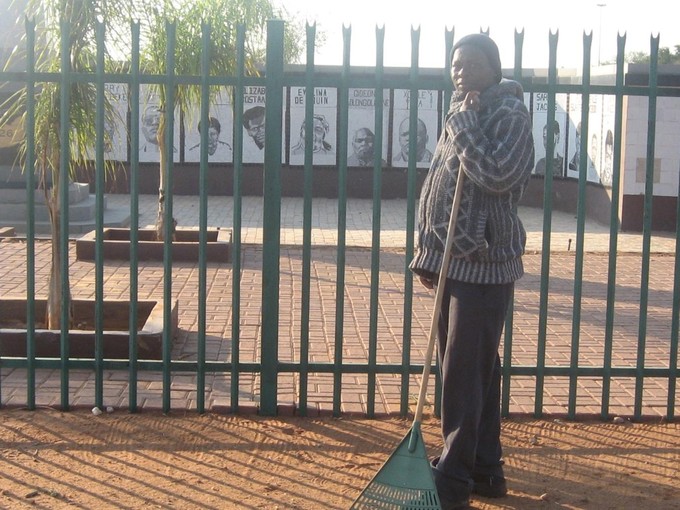Telling the story of the“Upington 26”
Locked gates keep residents out of memorial
Hidden behind locked gates, the monument to the “Upington 26” goes unnoticed by residents of this Northern Cape town who pass it every day.
The monument stands on the field where about 3,000 anti-apartheid protesters were teargassed by riot police in 1985. Part of the crowd ran past the house of municipal constable Jeta Sethwala who opened fire on them. He was chased, caught, stoned and hit with his rifle butt and set alight.
Twenty-six people were charged; 25 were found guilty of murder and one of attempted murder. Fourteen of them were sentenced to death but their sentences were later changed to prison sentences in three cases and the rest were paroled in the early 1990s during the start of the negotiations for a new constitution of South Africa.
The monument to the Upington 26 was built five years ago.

“I thought it was a municipal building”, said Amanda September, as she passed the monument on her way with her daughter Nomvula to the Paballelo police station from Dakota a section of the township near the railway station.
But Nomvula said she had heard about the Upington 26 when the monument was first unveiled in 2011.
“It is only now that I see faces of people” on the mural, said Amanda. She said she often passed in a taxi but had never taken much notice of the place.
“There are no locals coming here” says William Sifumba, who is employed by the //Khara Hais municipality to look after the monument. Occasionally tourists come to visit, he says.
Former death-row inmate Boy Chris Jafta, who also now works for the municipality, says the steel fence was put up to protect the monument from vandals.
The monument is locked and people who want to enter must ask the head of the parks division at the municipal offices in the Upington city centre, he says.
There is no information in the Paballelo library about the monument or about the Upington 26, though at the museum in the city centre there is a permanent exhibition of newspaper cuttings.
Curator Jolene van Niekerk says there are plans to expand the exhibition. “Overseas visitors and school children come to find out” about the Upington 26, says Van Niekerk.
Simon Bekebeke, a relative of the Bekebeke brothers, who were among those arrested, cleans the yard of the museum and sometimes tells stories to the tourists, says Van Niekerk.
Attempts to get comment on the memorial from the Bekebeke brothers were unsuccessful.
Support independent journalism
Donate using Payfast

Don't miss out on the latest news
We respect your privacy, and promise we won't spam you.
© 2016 GroundUp. 
This article is licensed under a Creative Commons Attribution-NoDerivatives 4.0 International License.
You may republish this article, so long as you credit the authors and GroundUp, and do not change the text. Please include a link back to the original article.

